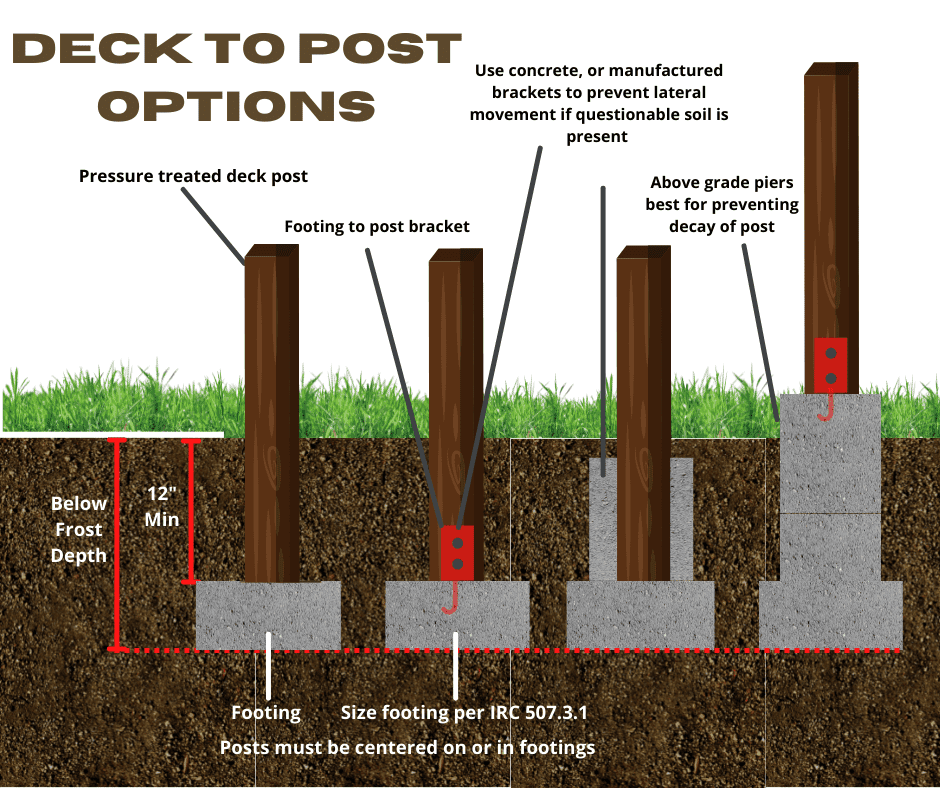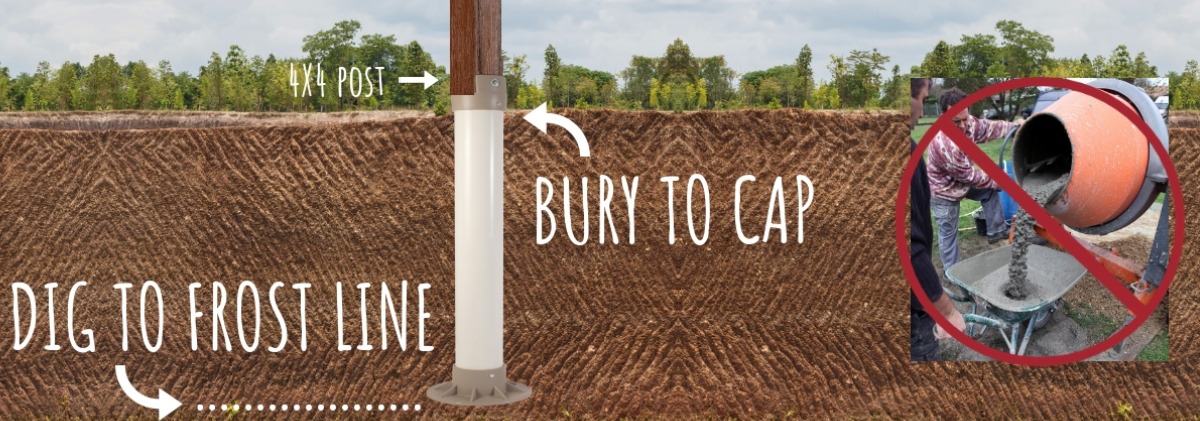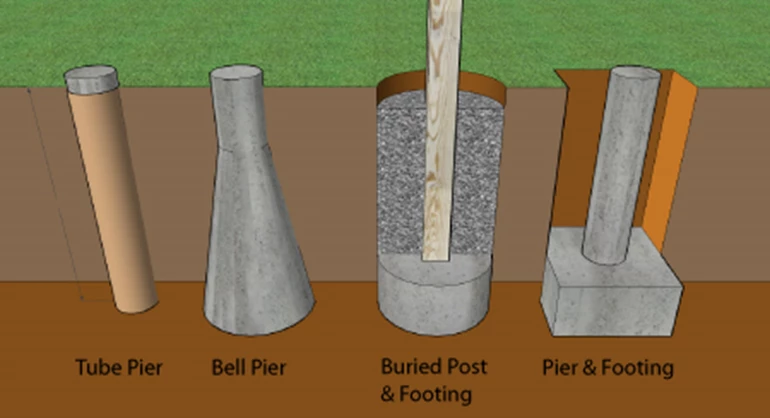Deck Footings 101: Navigating the Essentials for a Stable and Durable Deck
Deck Footings 101: Navigating the Essentials for a Stable and Durable Deck
Blog Article
Ensure Security and Longevity With Effectively Installed Deck Footings
Deck grounds might not be one of the most extravagant facet of deck building and construction, yet they play a crucial role in guaranteeing security and longevity. Effectively installed grounds give a solid foundation for your deck, protecting against typical concerns like sagging, shifting, and also collapse. Selecting the best type of footing and appropriately installing it can be a complex procedure. In this discussion, we will discover the significance of proper deck grounds, elements to consider throughout setup, different types of grounds readily available, detailed setup guide, and upkeep tips for making certain lasting footings. So, if you want to guarantee the stability and long life of your deck, maintain reviewing to find the crucial insights to achieve a sturdy and structurally audio outdoor room.

Significance of Proper Deck Grounds
Why are properly installed deck grounds essential for the stability and longevity of your deck? The solution depends on the fundamental duty that deck grounds play in supporting the weight of the whole structure. Deck footings are the foundation on which the deck rests, transferring the tons from the deck to the ground. When grounds are not correctly installed, it can cause a variety of concerns that jeopardize the security and longevity of the deck.
Firstly, appropriately set up deck footings disperse the weight of the deck evenly, avoiding any kind of unequal settling or sinking. This is specifically important in locations with unstable soil, as it helps to minimize the threat of the deck collapsing or changing. In addition, well-installed grounds guarantee that the deck continues to be level, preventing any type of architectural damages that can occur when a deck comes to be unequal.
Second of all, appropriately set up grounds offer a strong anchor for the deck, preventing excessive movement and sway. This assists to maintain the structural honesty of the deck, decreasing the danger of mishaps or injuries. It additionally lessens the wear and tear on the deck, enabling it to stand up to the components and routine usage for a longer amount of time.
Variables to Take Into Consideration for Deck Ground Setup
When mounting deck footings, there are a number of important aspects to take into consideration for appropriate installation. These factors can considerably influence the security and longevity of your deck. Firstly, you need to determine the sort of soil on which the deck will be built. Various dirt types have different load-bearing capabilities, so it is crucial to conduct a soil test to make sure the grounds can support the weight of the deck and its passengers. Furthermore, the area and format of the deck must be meticulously intended to prevent any challenges such as trees, energy lines, or underground pipelines. It is also vital to consider the local climate and weather, as these can influence the toughness of the footings. As an example, regions with a high water table might call for extra actions to stop water damages. The dimension and product of the footings need to be selected based on the size and weight of the deck, as well as the regional structure codes and laws. By considering these aspects, you can ensure the appropriate installment of deck footings and take pleasure in a stable and durable deck.
Sorts Of Deck Footings to Select From
There are numerous various types of deck footings available for you to select from. Each kind has its own benefits and disadvantages, so it's necessary to consider your particular requirements and the problems of your deck prior to deciding.
One typical type of deck ground is the concrete footing. This entails excavating openings in the ground and pouring concrete into them to create a solid foundation. Concrete footings are long lasting and give superb security, making them suitable for decks in areas with challenging dirt conditions or high wind tons.
One more option is the helical pier footing, which includes a steel shaft with helical plates that are screwed into the ground. These grounds are fast to set up and can be used in different dirt types, consisting of sandy or clay dirts. They are likewise flexible, permitting easy leveling of the deck.
Sonotube footings are an additional preferred choice. These footings are developed by placing a cardboard tube in a hole and loading it with concrete. Sonotube grounds are fairly very easy to install and offer ample security for smaller decks or in areas with much less requiring dirt conditions.

When picking the sort of deck ground, it's important to consider aspects such as dirt conditions, deck size and weight, neighborhood building ordinance, and individual choices. By picking the ideal ground type, you can ensure the security and durability of your deck.
Step-by-Step Guide for Putting Up Deck Footings

Establish the location: Start by marking the exact placement of each ground making use of stakes and string (Deck Footings). Think about any type of neighborhood building regulations or regulations pertaining to setback distances
Dig the openings: Use a post hole digger or an auger to dig the holes for the grounds. Typically, a depth of at the very least 36 inches is advised for stability.
Level the holes: Make sure that the bottoms of the holes are level (Deck Footings). This can be achieved by utilizing a level or a straight board across the top of the openings
Include gravel: Location a layer of gravel at the bottom of each opening to boost drainage and prevent the More Bonuses ground from sinking right into the dirt over time.
Place the footing types: Place the ground forms into the holes, ensuring they are centered and level. Use stakes to safeguard them in position.
Mix and pour concrete: Comply with the directions on the concrete mix bag to prepare the concrete. Put the concrete right into the footing kinds, loading them totally.
Smooth the surface area: Use a trowel to smooth the surface area of the concrete and remove any air pockets. Permit the concrete to heal according to the manufacturer's guidelines.
Upkeep Tips for Resilient Deck Footings
Proper maintenance is critical for guaranteeing the longevity and stability of deck footings. By regularly examining and preserving your deck grounds, you can stop damage and prospective safety and security hazards.
Normal cleansing is additionally crucial for keeping deck grounds. Dust, debris, and greenery can accumulate around the footings, which can lead to moisture build-up and degeneration. Cleaning the grounds on a regular basis, using a pressure or a brush washer, can aid stop these concerns and prolong the life expectancy of your deck.
Along with cleaning, it is essential to maintain the location around the footings clear of any kind of blockages. Prevent stacking items versus the footings or enabling plants to grow too near to them. These obstructions can trap dampness and trigger the footings to weaken in time.
Last but not least, normal resealing of the footings is suggested to shield them from dampness and various other ecological aspects. Applying a water-proof sealer can help prevent water damages and prolong the life-span of the grounds.
Verdict
In final thought, proper setup of deck footings is essential for guaranteeing stability and longevity of your deck. Aspects such as soil kind, tons ability, and neighborhood building ordinance require to be considered when picking the best type of deck grounds. Adhering to a detailed overview for setup and regular maintenance will assist to make sure the grounds continue to be durable and long lasting.
In this discussion, we will discover the relevance of appropriate deck footings, variables to consider throughout setup, different types of footings readily available, detailed installment overview, and upkeep pointers for making sure long-lasting footings. Deck grounds browse around this web-site are the foundation on which the deck rests, transferring the load from the deck to the ground.One common kind see this page of deck footing is the concrete footing. Put the footing forms: Place the ground forms right into the openings, ensuring they are focused and degree.In conclusion, correct installment of deck footings is critical for ensuring stability and longevity of your deck.
Report this page